Why Does My Dog Go Between My Legs?

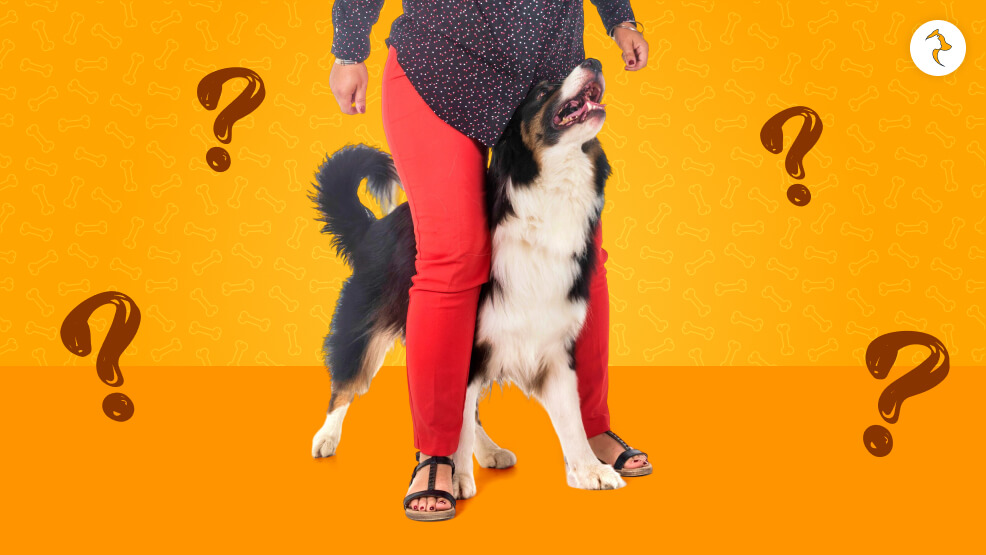
Dogs are fascinating creatures with complex behavior that seems to perplex humans. One thing that often confuses people is when a dog straddles between your legs.
Most dog owners have been treated to this bizarre ritual, be it a sweet nuzzle, a quick run-through, or a snuggle-up between your legs.
Although it might seem odd on the surface, some fairly legitimate explanations exist for why your dog is doing this.
It is not simply a bizarre quirk—occasionally it is an expression of emotion, a natural response, or even an indication that something else is out of sorts.
Now, let’s discuss the possible causes, what they are, and how to address them in a way that will accommodate your dog’s emotional needs and household dynamics.
Main Takeaways
- Dogs love to circle between the owner’s legs to demonstrate love, comfort, or submission.
- The action could also be caused by fear, anxiety, or cold.
- It’s mostly harmless but can be regulated or changed if too much or unnecessary.
- If needed, confidece building and positive reinforcement may be employed to change the behavior.
- Professional consultation has to be made if the behavior is with the presence of fear, anxiety, or aggression.
Why Dogs Go Between Legs?
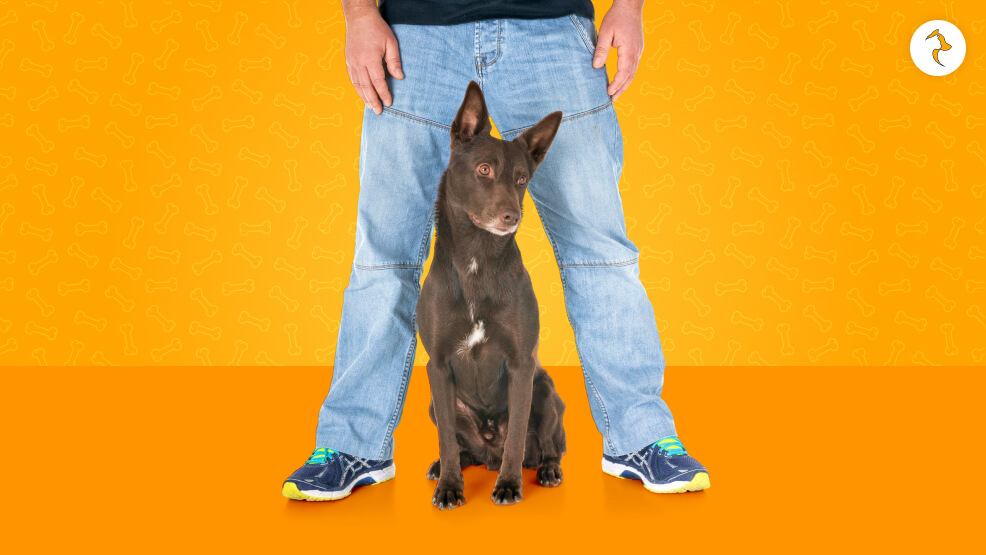
To understand this behavior, we have to get into a dog’s paws. Dogs are not like human beings in that they rely heavily on body language and physical contact to receive information.
Merely hanging around you—especially within a safety zone or enclosure, such as between your legs—can be a tremendous show of trust and emotional dependence.
Dogs are naturally extremely instinctual creatures. Much of what they do, as in the case here, wrapping up in instincts accumulating over thousands of years of domestication and evolution.
Most Common Reasons Dogs Go Between Legs
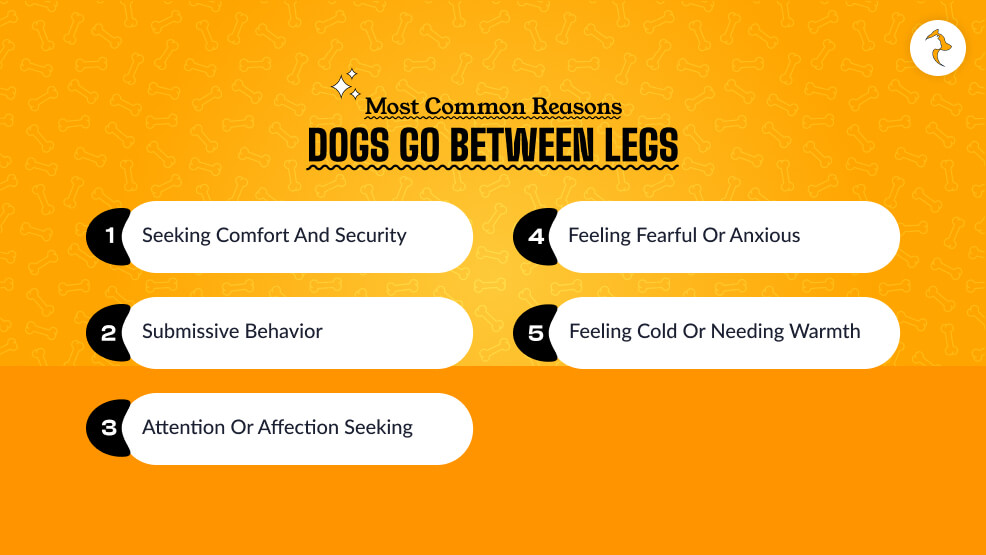
There are many reasons as to why does my dog go between my legs, and the reasons are quite simple as well, so let’s get to know them.
1. Seeking Comfort and Security
Most likely the most typical explanation is that your dog simply feels safe in between your legs. Canines are pack animals.
Out in nature, being near the alpha (you, by extension) provides a sense of safety. Being close—close enough that they end up being between your legs—can mimic that sense of safety.
This is the type of behavior you would see during stressful situations, such as in crowds, at the vet clinic, or during stormy weather. Your dog will sit between your legs, using you as a human shield of sorts.
2. Submissive Behavior
Others creep under your legs as a demonstration of submission. Dogs can express this in many ways, including caving in their heads, avoiding eye contact, laying their stomachs open, or taking lower body postures.
By crawling between your legs, your dog may demonstrate your dominance and that they are not threatening. It’s also very common in dogs with passive behaviors or those who are trauma- or abuse-scarred.
3. Attention or Affection Seeking
Did your dog shove their head or body between your legs when you stand or sit? It’s probably how they’re telling you, “Pet me now, please!” Dogs learn what works when it comes to getting attention.
If shoving between your legs always results in getting petted, rewarding, or even just gets the look from you, they’ll keep doing that.
Generally, this can be conditioned with time just because it is reinforcing.
4. Feeling Fearful or Anxious
If your dog hides or is around your legs a lot when there is noisy weather (e.g., thunderstorms or fireworks), visitors, or changes in routine, this could be a sign of anxiety.
A stressed dog will bolt to where it feels most safe—likely right next to (or in) its favorite human. Depending on how stressed the dog is, the response may be minimal or incredibly obvious.
If this is a conditioning response or is associated with other behaviors like shivering, drooling, or frequent licking, drill further.
5. Feeling Cold or Needing Warmth
Believe it or not, your dog’s legs are a small heater. For smaller breeds or sparsely coated canines, usually generally, tucking in between your legs is an enjoyable way of getting warm.
This is more common when cold, so warmth may be a motivator if the behavior is more noticeable during cooler weather.
The behavior is in your comfort zone and what you see as a function of your dog’s behavior. For the most part, this is a benign activity. If it is an intermittent phenomenon that does not disrupt routine, there is no problem.
All that aside, there are a few situations where you may want to stop or discourage it:
- Disruption of movement: If the pet walking around your legs distracts you when you are rushed, it might not be safe for either of you.
- Overdependence: If it’s an anxiety or compulsion response, the behavior might be a sign of emotional imbalance.
- Boundary setting: You may need to set more respectful physical boundaries, especially with big dogs or over-visitors.
How to Fix and Replace This Habit
If you conclude that it is time to break this habit, it’s wonderful to do so gradually and persistently. Here are some tips:
1. Apply Positive Reinforcement Techniques
Instead of scolding your dog for approaching between your legs, divert them and reinforce the desired behavior.
For example, train your dog to move to a specific “place” or mat. Praise or reward them with a treat whenever they move to the place and not in between your legs. Slowly, they will begin to relate the matter to reward and security.
2. Stop Giving Them Attention When They Do It
If all you’re offering is attention, and you always give it attention by stroking or cooing over it, they will keep doing it.
In this case, the hardest thing to do is calmly ignore the behavior—no screaming, no pushing them away forcibly. Just stop. And they’ll discover that the behavior doesn’t pay.
And reward them for occasions when they do have less erratic behavior.
How to Increase Your Dog’s Confidence
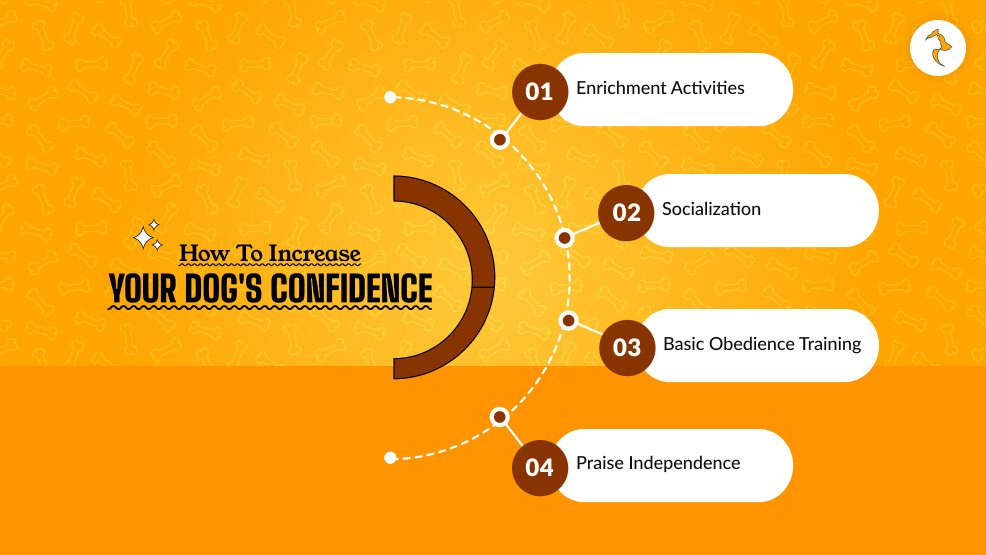
Leg-hiding dogs are generally not confident, particularly those rescued or traumatized. Confidence develops over time through exposure to positive experiences.
Some improvement tips are below:
1. Enrichment Activities
Give your dog puzzles, snuffle activities, or interactive toys. Mental stimulation develops strength and independence.
2. Socialization
Slow exposure to various surroundings, people, and other animals can desensitize your dog and lower its anxiety level. Start with quiet rooms and work your way up.
3. Basic Obedience Training
Basic obedience training, such as orders like “sit,” “stay,” or “place,” can instill in your dog a sense of responsibility and mastery, which is the foundation of confidence.
4. Praise Independence
When your dog remains calm, is alone, or stands back from you with dignity, praise and reward it for doing so. This makes the impression that standing back from your legs is not threatening—it is well!
When Professional Help Is Necessary
Generally, this leg-snuggling behavior is innocuous. But there are situations when it is symptomatic of something deeper that has to be treated under the supervision of a professional canine trainer or veterinary behaviorist.
Be on the lookout for these indicators:
- The behavior turns compulsive and repetitive.
- Your dog exhibits excessive anxiety (shaking, pacing, whining).
- It is accompanied with aggressive behaviors like growling or snapping when touched.
- Your dog also shows compulsive behaviors, e.g., chasing tail, licking, or barking at nothing.
- Redirection or behavior training has been unsuccessful despite consistency.
Professional therapy in these situations can uncover the cause and an individualized behavior modification or training plan.
Knowing Your Dog Loves You!
Dogs moving from one leg to the other is an uncharacteristic but revealing action that generally indicates their mood, instincts, and relationship with you.
While it can be an expression of affection, seeking solace, or submission, it can also mean fear or over-dependence if it occurs too often.
Knowing why your dog is doing this is step one. From there, you can allow it to happen, practice controlling it, or change it through training.
Patience, consistency, and compassion get you as far as they ever will in these situations. Our dogs communicate in actions—not words—and going between your legs might just be their way of saying, “I trust you.”




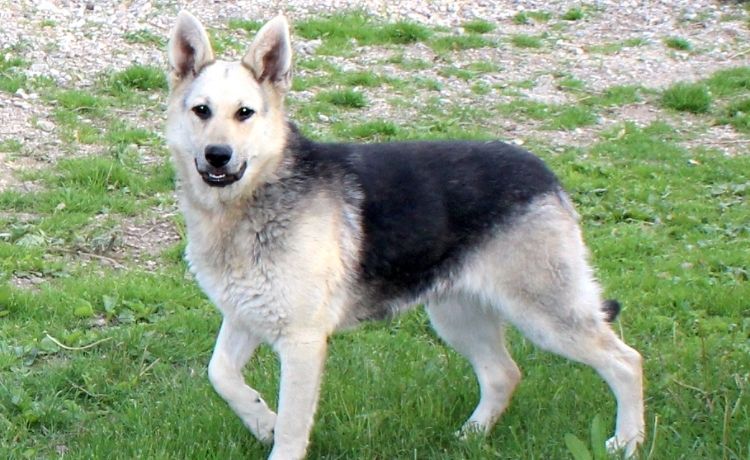



Leave A Comment